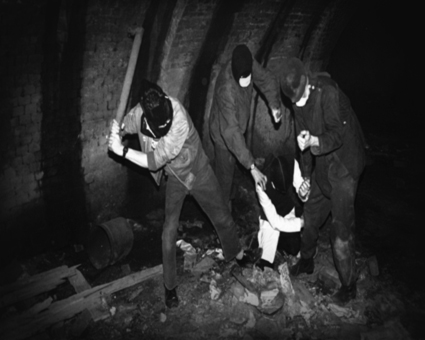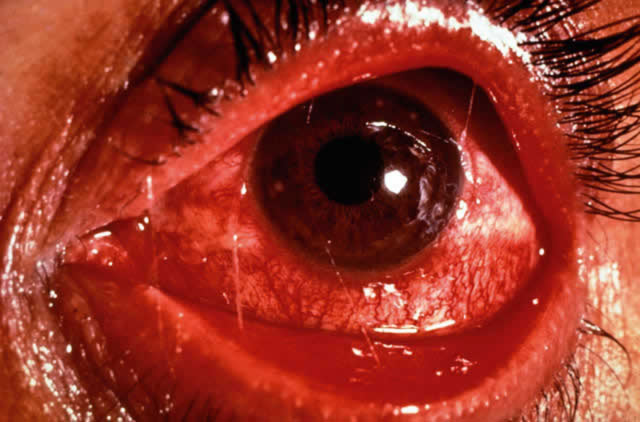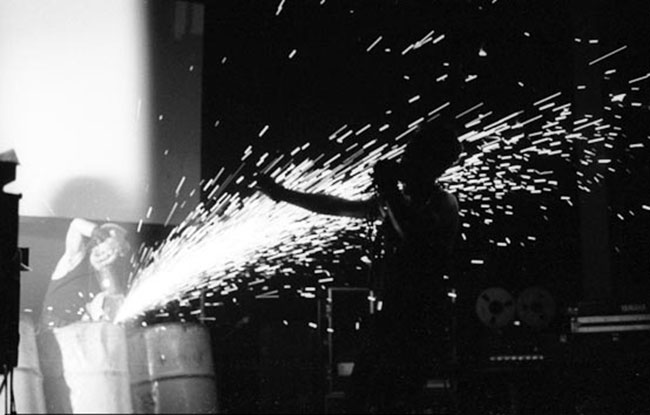TERROR BEGETS TERROR

<SPK>'s critique of the Sozialistisches Patientenkollektiv
Australia's < S.P.K.> is different from the Sozialistisches Patientenkollektiv. Although inspired by the therapeutic praxis aimed at turning "illness into a weapon", our praxis is directed towards a critique of culture. The history we present of the Sozialistisches Patientenkollektiv and the Red Army Faction should not be read as condoning the policies and actions of terrorist organizations; policies which have failed abysmally in their avowed intent to effect a beneficial form of revolutionary social transformation. Accordingly <SPK> disassociates itself from the political terrorism of the original Socialist Patients Collective, for it is a fact that terror begets terror; it is essentially self-defeating, and only ever serves to strengthen the security techniques of the repressive state apparatus and the globalized corporations of the dominant class. The purpose of this information is simply to provide the historical facts as we understand them.
The Socialist Patients Collective (Sozialistisches Patientenkollektiv) was an Anarcho-Marxist group formed in the late 1960s / 1970s. Historically, the Kollectiv contested psychiatric medicine as an oppressive institution designed to invalidate and render abject the ciphered cries for a revolutionary solution to the lived contradictions of late capitalist society articulated by a section of the population marginalized by society as detritus - damaged and 'unproductive': a "patient class". SPK viewed capitalism as productive of mental illness. This is proclaimed in the Kollectiv's Manifesto (see J P Sartre's 1972 Open Letter to SPK attached).
Doctor Wolfgang Huber, born August 1942, a psychiatrist at Heidelberg University was the Kollectiv's official founder in 1970. The catalyst for the group's formation was instigated when Huber was forcibly removed from his position as the head of the University's klinic because he refused to collaborate with the conservative practices of his peers within the Psychiatric Department. In support, the patients organized a series of protests, and eventually occupied the administration offices of Heidelberg University. Subsequently, Huber was reinstated and given the control of four rooms belonging to the University; however, this only occurred after he had informed the Director that numerous patients within the kollectiv had, in an act of protestation and political solidarity, jointly decided upon a group action to commit collective suicide.
During their group therapy sessions, which the Kollectiv designated as 'Working Circles', SPK organized its patients into sessions incorporating discussions around a multiplicity of issues: these included explorations of Marxist theory, mysticism, radical forms of psychotherapy, the productivist ethic, repressive sexuality, and dialectics. The leading cadres of SPK linked their theoretical reflections with the creation of therapeutic working circles centred on explosives, radio communications, photography, surveillance, and self-defence techniques.
SPK defined Late Capitalist society as terminally ill - a machine that produces a surplus population who are physically and psychologically sick. For this society to be cured it must of necessity undergo a fundamental social revolution. SPK held to the ideology that patients, in order to escape their personal mental illnesses, foment violent attacks on bourgeois society as an intrinsic part of the therapeutic process. Accordingly SPK desired to subvert mental illness, forging it into a weapon against society. The following are clear examples of the SPK's slogans - epitomizing their ideological objectives:
"Therapy
through violence
|
|
Ingeborg Muller, a lawyer in Mannheim, who in addition claims to be a successor to the original SPK group and asserts his claim to be the sole practitioner of the Kollectiv's "pro-illness" original orientation.
Karl-Heinz Dellwo, born April 1952. At one stage he lived with Susanne Albrecht and was a member of the 'Committee Against the Torture of Political Prisoners'. He was involved with the SPK and took part in the 1975 Occupation of the West German embassy in Stockholm. In July 1977, Dellwo was sentenced to a double-life imprisonment by a Court in Dusseldorf, for his participation in the Occupation. He was released in 1995.
Klaus Junschke, born September 1947, a student member of the SPK who managed to escape arrest when, in 1971, police targeted certain SPK members. He joined the Red Army Faction with his terrorist girlfriend, Elisabeth Van Dyck, and was involved in at least one bank robbery (on December 1971 in Kaiserslautern - alongside Ingeborg Barz and Wolfgang Grundmann). Junschke was arrested on March 2, 1971. He was tried at a court in Kaiserslautern, and was sentenced alongside Manfred Grashof and Wolfgang Grundmann to life imprisonment on June 2, 1977. It is the opinion of Gerhard Muller that Junschke was in some way involved in the bombing of the Axel Springer Verlag in Hamburg on 19 May 1972 (alongside Tinny Stachowiak, Ulrike Meinhof, and Siegfried Hausner) despite the fact that he was in detention at the time.
Hanna-Elise Krabbe, born in Bad Bentheim in October 1945. She was a member of the IZRU (the group which succeeded the SPK) and was the elder sister of Friederike Krabbe, another terrorist. Hanna-Elise Krabbe took part in the 1975 Occupation of the West German embassy in Stockholm. She was the only female terrorist involved in the occupation. Her role during the occupation was to guard the hostages. She was arrested when the occupation failed, and was sentenced, on July 20, 1977, to twice life imprisonment. She was released from prison in 1996, after serving 21 years.
Friederike Krabbe, born in Bad Bentheim on 31 May 1950, was the younger sister of Hanna-Elise Krabbe, another terrorist. Friederike Krabbe studied psychology, pedagogy and sociology in Berlin from 1970 to 1973, and then went on to study medicine for a while in Heidelberg. She was a member of the SPK and, following its dissolution, the RAF. She is believed to have been one of the terrorists who kidnapped Hanns Martin Schleyer. According to Monika Helbing, after Schleyer was executed in 1977, Krabbe fled to Baghdad with Elisabeth von Dyck. Around this time Krabbe disappeared; her whereabouts are still unknown.
Siegfried Hausner, (born January 1952 - died 24 April 1975), a student member of the SPK, and later, the RAF as a member of the 'working circle: explosives.' He was involved in numerous bombings; most notably the bombing of the Axel Springer Verlag on 19 May 1972. In Stockholm he supervised the 1975 Occupation of the West German embassy, in which he accidentally blew himself up, apparently dying from the injuries incurred during the explosion after being flown back to West Germany.
Sieglinde Hofmann, born 14 March 1945, a nurse and social worker who was a member of the SPK, and subsequently the RAF. She went underground in 1976 and was involved in many terrorist acts through the late seventies - most noticeably she was involved in the Jurgen Ponto murder, as well as the Hanns Martin Schleyer kidnap/murder. Arrested in Paris in 1980, Hofmann was sentenced to fifteen years imprisonment for her involvement in the Ponto murder, and in 1995, three days before her sentence was finished; she was tried again for other offenses, and sentenced to life imprisonment.
Birgitte Mohnhaupt, born 24 June 1949, a philosophy student who was a member of the SPK and subsequently a member of the RAF. She became a very important member of the group and was a major player during the Autumn Offensive of 1972. She was involved in the Jurgen Ponto murder, and the kidnap/murder of Hanns Martin Schleyer. She organized car theft and weapon procurement. Arrested in June 1972 in Berlin, Mohnhaupt was released in 1977 and pursued a range of criminal activities. Arrested in 1982, she was sentenced to five times life imprisonment. On February 12, 2007, a court in Stuttgart ruled that she qualified for early release. Brigitte Mohnhaupt was released from the Aichach prison in Germany on March 25, 2007, after serving 24 years of her sentence.
Carmen Roll, was a member of the SPK, and subsequently RAF. An active member of 'working circle: explosives', Roll achieved limited success with Siegfried Hausner when they managed to manufacture a small amount of TNT in December 1970 at the University Institute of Physiology.>In February 1971, Roll, along with Hausner, planned to bomb the President of the Federal Republic's special train at Heidelberg station; she arrived too late with the explosives, and the plot fell through. On March 2, 1972, Roll was spotted with Tommy Weissbecker outside a hotel in Augsburg. Weissbecker was shot dead and Roll was eventually arrested. Two weeks later prison doctors gave her a near-fatal dose of ether. In 1976 Roll was freed from prison, whence she moved to Italy and became a nurse.
Bernhard Maria Rössner, born in October 1946. He was a school dropout and had traveled extensively in the Middle East. Upon his return to West Germany he met with Karl-Heinz Dellwo and later took part in the 1975 Occupation of the West German embassy. The Occupation failed and Rössner was arrested and imprisoned. In July 1977 he was sentenced to twice life imprisonment for his participation in the Occupation by a court in Dusseldorf. He was released in 1996.
Margrit Schiller, born in Bonn in March 1948. Studied psychology in Bonn and Heidelberg becoming a student member of the SPK and one of the members who turned militant in 1970. After the SPK dissolved Schiller joined the Red Army Faction. She was involved in the murder of a policeman on October 22nd 1971 and was arrested. She later claimed that it was actually Gerhard Muller who murdered the policeman. In 1979 she was released from prison.
Lutz Taufer, was born in March 1944. He had links with the SPK and protested against the torture of political prisoners in the Federal Republic in 1974. In 1975 he took part in the 1975 Occupation of the West German embassy in Stockholm, and was arrested after the Occupation failed and subsequently imprisoned. In July 1977 he was sentenced to twice life imprisonment for his participation in the Occupation by a court in Dusseldorf. He was released in 1996. Taufer has been living as an émigré in Brazil in an openly inverted (transgendered) incestuous relationship with his sister since 1999.
Elisabeth von Dyck, (born in Nuremberg, October 1951 - died 4 May 1979) was a member of the SPK and a covert member of the RAF. She was the girlfriend of Klaus Junschke and later of lawyer Klaus Croissant. She was worked with the 'Committees against Torture' in 1974. In 1975 Von Dyck, along with Siegfried Haag, was arrested on suspicion of smuggling weapons out of Switzerland and subsequently served six months in a detention centre in Cologne. However, a warrant went out for her arrest in 1977 for allegedly supporting a terrorist organization. Von Dyck went underground and Monika Helbing claimed that around this time Von Dyck fled to Baghdad for a while with Friederike Krabbe. She returned to West Germany between 1977 and 1979, and on 4 May 1979, Von Dyck entered a house, thought to have been an RAF hideout, in Nuremberg, which was under police surveillance. The police shot Von Dyck through the back, killing her. A gun was allegedly found on her body. Von Dyck was shot even though she was only suspected of being involved with the RAF, despite her status, as not a high-priority on the RAF wanted list. It was subsequently alleged that the police shot her after she first drew a pistol and aimed it at them; this was despite the fact that the police shot her in the back.
Ulrich Wessel, (born 1946 - died 24 April 1975), the son of a rich Hamburg businessman. A millionaire by inheritance, Wessel was a self-described dandy with a penchant for ladyboys and sports cars. He was involved with the SPK 'working circle: explosives' and took part in the 1975 Occupation of the West German embassy in Stockholm. He died during the Occupation when the TNT was accidentally exploded; the force of the explosion startled him so much that he dropped the grenade he was holding and it exploded. He died soon afterwards.
Since
2003 Huber has become the bishop and council chairman of the Evangelical Church
(EKD) of Berlin-Brandenburg-Silesian Upper Lusatia. He is an active Kreuzpfadfinder,
an adult member of Germany's Protestant Scouting Movement where he exercises
his therapeutic experience attending to the religious and personal needs of
his congregation. It has been alleged that Huber has not renounced every vestige
of his revolutionary past, but is instead actively involved in the Trotskyist
tactic of "deep entryism" as a member of the Social Democratic Party
of Germany. |
Sources and notes . Baader-Meinhof.com this is baader-meinhof / terminology / SPK . Book: Hitler's Children by Jillian Becker . Book: Televisionaries (Televisionaries: the red army faction story 1963-1993) by Tom Vague
Further reading... . Book: Spk: Turn Illness into a Weapon by Wolfgang Huber . Socialist Patients' Collective/Patients' Front SPK/PF (H) . Timeline |
 |
